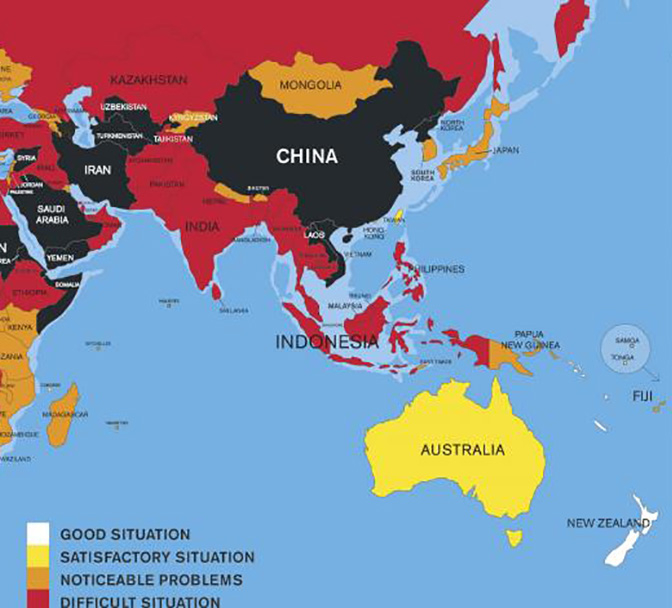
Most of the movement in the 2016 World Press Freedom Index unveiled today by RSF/RWB is indicative of a “climate of fear and tension” combined with increasing control over newsrooms by governments and private-sector interests.
The index reflects the intensity of the attacks on journalistic freedom and independence by governments, ideologies and private-sector interests during the past year.
“It is unfortunately clear that many of the world’s leaders are developing a form of paranoia about legitimate journalism,” said RSF secretary-general Christophe Deloire.
“The climate of fear results in a growing aversion to debate and pluralism, a clampdown on the media by ever more authoritarian and oppressive governments, and reporting in the privately-owned media that is increasingly shaped by personal interests.
“Journalism worthy of the name must be defended against the increase in propaganda and media content that is made to order or sponsored by vested interests.
“Guaranteeing the public’s right to independent and reliable news and information is essential if humankind’s problems, both local and global, are to be solved.”
World benchmark
Seen as a benchmark throughout the world, the RSF/RWB index ranks 180 countries according to the freedom allowed journalists.
It also includes indicators of the level of media freedom violations in each region. These show that Europe (with 19.8 points) still has the freest media, followed distantly by Africa (36.9), which for the first time overtook the Americas (37.1), a region where violence against journalists is on the rise.
Asia/Oceania (43.8) and Eastern Europe/Central Asia (48.4) follow, while North Africa/Middle East (50.8) is still the region where journalists are most subjected to constraints of every kind.
The decline affected eastern Asia’s democracies, previously regarded as regional models.
In the year since the law on the protection of specially designated secrets took effect in Japan (72nd, down 11) in December 2014, many media outlets, including state-owned ones, succumbed to self-censorship, especially vis-à-vis the prime minister, and surrendered their independence.
In South Korea (70th, down 10), relations between the media and government have become much more fraught under President Park Geun-hye.
In Hong Kong (69th), where Chinese businessmen are increasingly interested in acquiring media outlets, media independence continued to be the main challenge for freedom of information.
Chinese repression
In China (176th), the Communist Party took repression to new heights. Journalists were spared nothing, not even abductions, televised forced confessions and threats to relatives.
In a recent tour of the country’s leading news organisations, President Xi Jinping said the media “must love the Party, protect the Party, and closely align themselves with the Party leadership in thought, politics and action.”
He could not have made his totalitarian view of the media’s role any clearer.
After improving last year, Burma (143rd) and Philippines (138th) saw their scores decline in the 2016 index, revealing the limits of the reforms and measures taken to improve media freedom and safety.
Singapore (154th) suffered the region’s second biggest decline, after the Sultanate of Brunei (155th, down 34), where the gradual introduction of the Sharia and threats of blasphemy charges fuelled self-censorship.
The governments of India (133rd) and Bangladesh (144th) took little action in response to violence against media personnel and were sometimes directly involved in violations of their freedom.
Sri Lanka (141st, up 24 places) is the Asian country that rose most in the 2016 index. Its journalists no longer had to fear telephone threats or enforced disappearances encouraged by the Rajapaksa family, especially the former president’s brother, former Defence Secretary Gotabaya Rajapaksa.
Pacific wrap-up
Its news media also fortunately recovered their former readiness to speak out even if they obviously still lag far behind the dynamism and combativeness of the media in Samoa (29th, up 11), where the Media Council law adopted in early 2015 decriminalised defamation, strengthened pluralism and gave the media more leeway to criticise.
In Tonga (37th, up 7), the independent media have progressively assumed their watchdog role since the first democratic elections in 2010.
In Fiji (80th, up 13), despite the threats that the constitution and legislation pose to journalists, the media have asserted their independence, improved the public debate and succumbed less and less to self-censorship.
New Zealand rose one place to fifth, behind Finland, Netherlands, Norway and Denmark. Australia remained unchanged at 25th. While the RSF/RWB index noted the general quality of Australian news media, it commented on the heavy concentration of print ownership.
“Coverage of Australia’s refugee detention centres on Manus Island (off Papua New Guinea) and the Pacific Ocean island of Nauru is nonetheless restricted,” the index report says.
“New laws in 2014 and 2015 provide for prison sentences for whistleblowers who disclose information about conditions in the refugee centres or operations by the Australian Security Intelligence Organisation.”
But overall in Oceania, RSF/RWB sums up: “A fine Pacific island postcard.”



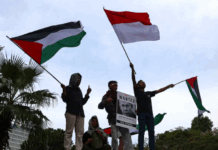
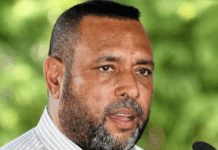
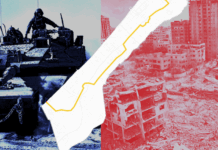
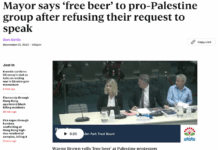






















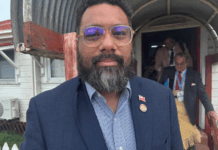
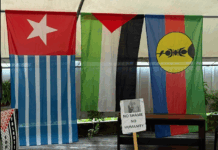












[…] is due to commemorate World Media Freedom Day on May 3. In the 2016 Reporters Without Borders World Press Freedom Index released this week, Tonga had improved its global ranking seven places to 37th out of 180 countries […]
Comments are closed.